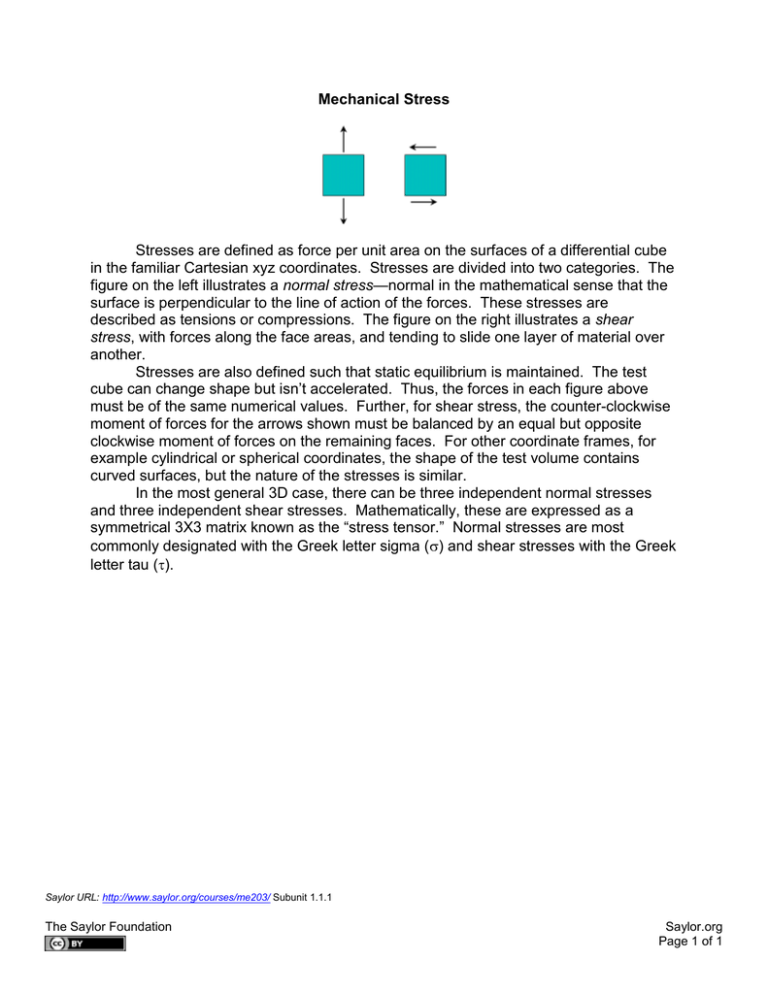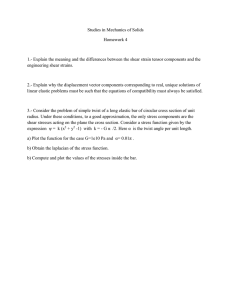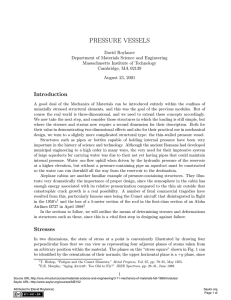Mechanical Stress Stresses are defined as force per unit area on the
advertisement

Mechanical Stress Stresses are defined as force per unit area on the surfaces of a differential cube in the familiar Cartesian xyz coordinates. Stresses are divided into two categories. The figure on the left illustrates a normal stress—normal in the mathematical sense that the surface is perpendicular to the line of action of the forces. These stresses are described as tensions or compressions. The figure on the right illustrates a shear stress, with forces along the face areas, and tending to slide one layer of material over another. Stresses are also defined such that static equilibrium is maintained. The test cube can change shape but isn’t accelerated. Thus, the forces in each figure above must be of the same numerical values. Further, for shear stress, the counter-clockwise moment of forces for the arrows shown must be balanced by an equal but opposite clockwise moment of forces on the remaining faces. For other coordinate frames, for example cylindrical or spherical coordinates, the shape of the test volume contains curved surfaces, but the nature of the stresses is similar. In the most general 3D case, there can be three independent normal stresses and three independent shear stresses. Mathematically, these are expressed as a symmetrical 3X3 matrix known as the “stress tensor.” Normal stresses are most commonly designated with the Greek letter sigma () and shear stresses with the Greek letter tau (). Saylor URL: http://www.saylor.org/courses/me203/ Subunit 1.1.1 The Saylor Foundation Saylor.org Page 1 of 1


